To make $1,000/mo from ads on a blog, you typically need 100,000-200,000 visitors.
This assumes you have chosen a good niche and that your content is long and informative.
In some niches, it might take 1,000,000 visitors to earn $1,000 from ads. But in the best niches, it might just need 30,000-50,000 visitors.
Let’s take a closer look at what impacts ad revenue.
#1 Page Views per Visitor
Page views matter in ad revenue.
If your site has 1,000 visitors who view 10,000 pages in total, you will earn more than what you’d make with only 1,000 views.
I’ve struggled with this in the past. On my tech blogs, an average visitor just checks a page or two and leaves.
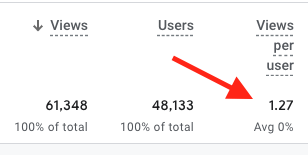
Thus, I quite literally need hundreds of thousands of visitors to make a good income.
But if the number of page views per visitor was higher, I’d need much fewer people to my blogs.
#2 Niche
The niche has a huge impact on potential ad revenue.

In some niches, you might struggle to make $1,000 with 1,000,000 visitors.
But in some best niches, you might make $1,000 with just 50,000 visitors.
This is because depending on your niche, ads might be relevant or irrelevant.
Let’s take two examples.
If you have a blog post about funny cats, it’s hard to show ads. This is because people aren’t looking to make any purchases on a topic like that. If someone clicks an ad, that’s just a misclick or coincidence.
But if the post is about losing weight, it’s much easier to sell exercise programs or gym memberships with ads.
The closer your audience is to a purchase, the better the ads will earn.
#3 Traffic Source
If your blog traffic originates from a viral social post, that’s not going to earn a lot.
But if your traffic comes from search engine results, it’s usually well-targeted and insightful for the reader.
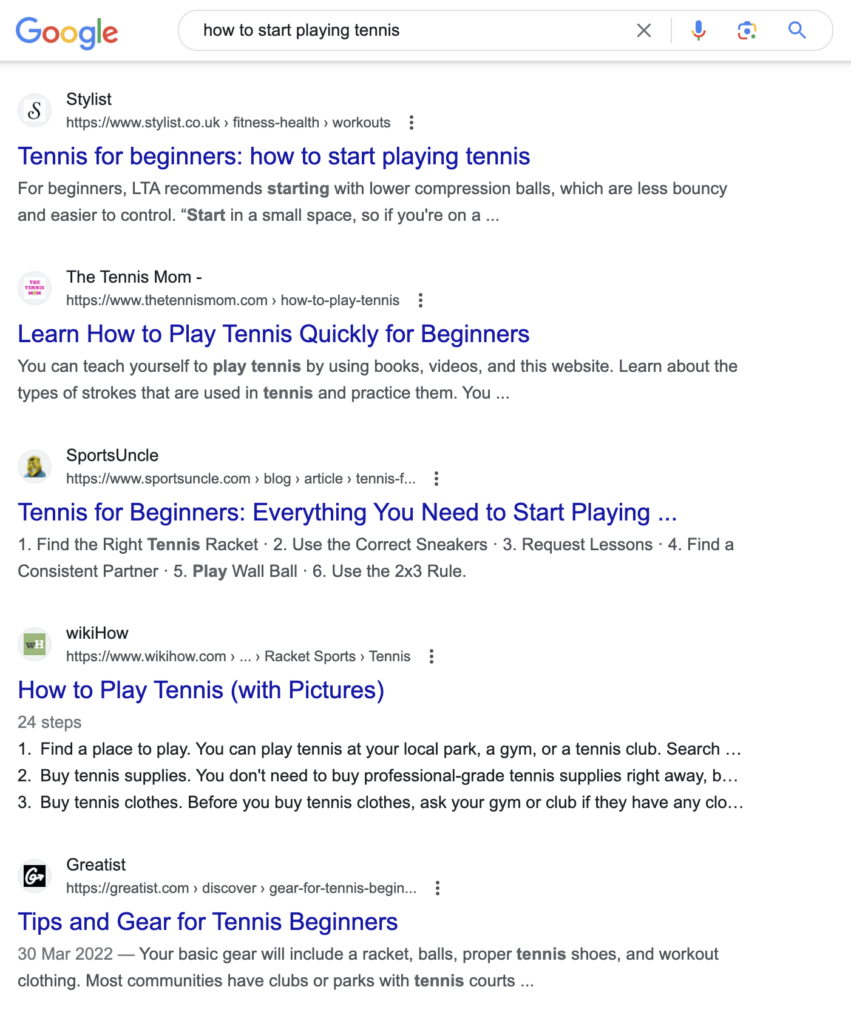
#4 Ad Strategy
Having 1 ad vs 10 ads makes a big difference when it comes to earnings.
While the ad companies usually manage your ad placements, you can always have a say on it.
Most ad companies offer you some ad strategy options, such as:
- Revenue focused
- User experience focused
- Balanced
If you choose a revenue-focused strategy, you will throw UX out of the window but might earn more.
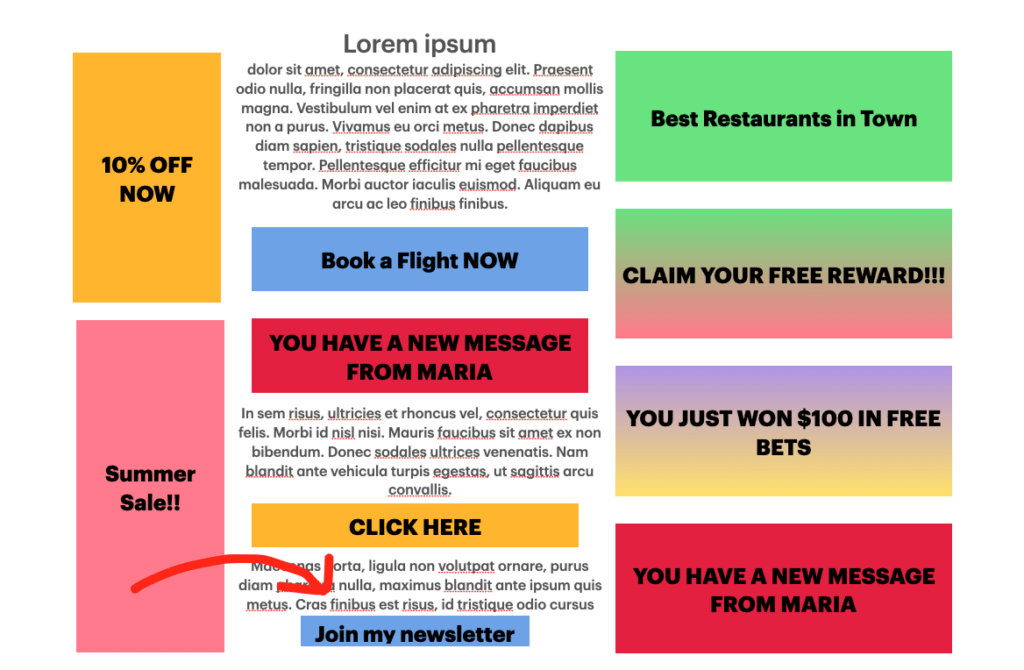
However, I don’t recommend doing this because Google will quickly penalize sites like this.
#5 Website Content Quality
A 500-word post will earn much less than a 5,000-word one.
If you have detailed long-form content, there’s a lot more room to place ads “naturally”. Thus, there’s more revenue potential.
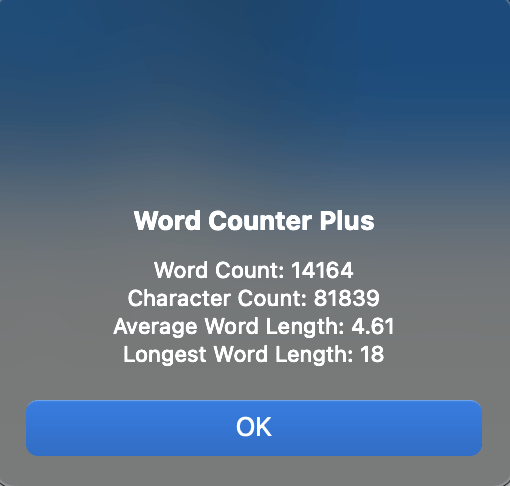
Also, if your content is of high quality and people are engaged, that will always have a positive impact on ad revenue.
#6 Audience Demographics
Audience demographics significantly influence ad revenue. They determine the relevance and effectiveness of ads.
When the audience’s age, income, interests, and other demographic factors align with the advertiser’s target market, it can lead to higher engagement and conversion rates.
This makes the ad space more valuable.
This alignment often results in higher Cost-per-click (CPC) rates due to the increased purchasing power or specific interest of the audience.
Additionally, certain demographics are more attractive for direct brand partnerships or sponsorships, offering additional revenue opportunities.
#7 Seasonal Trends
Ad revenue is heavily tied to seasons.
From Ezoic’s data, you can see that ad revenue tends to heavily dip after black Friday.
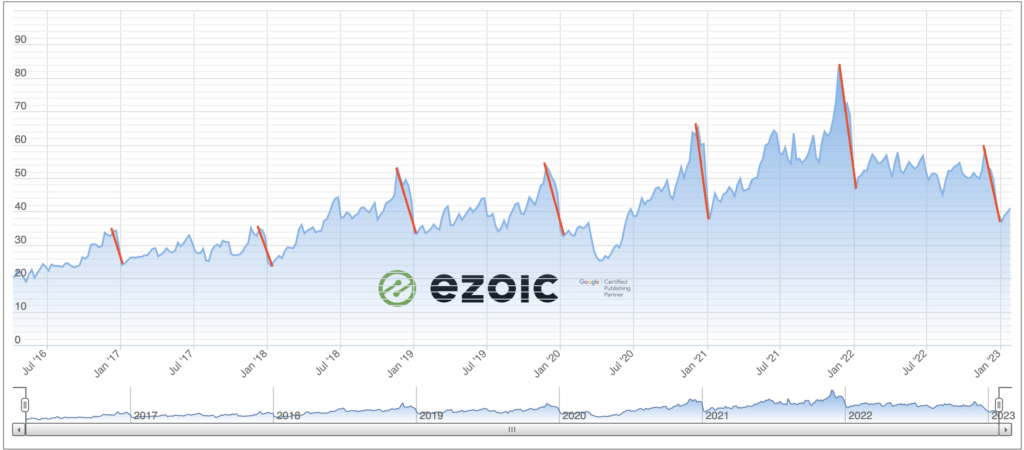
There can easily be a 50% swing in just a couple of months.
So don’t be disappointed if ads don’t earn well, especially in Q1.
#8 Geographic Location of Audience
To earn anything significant from ads, the majority of your audience should originate from the US.
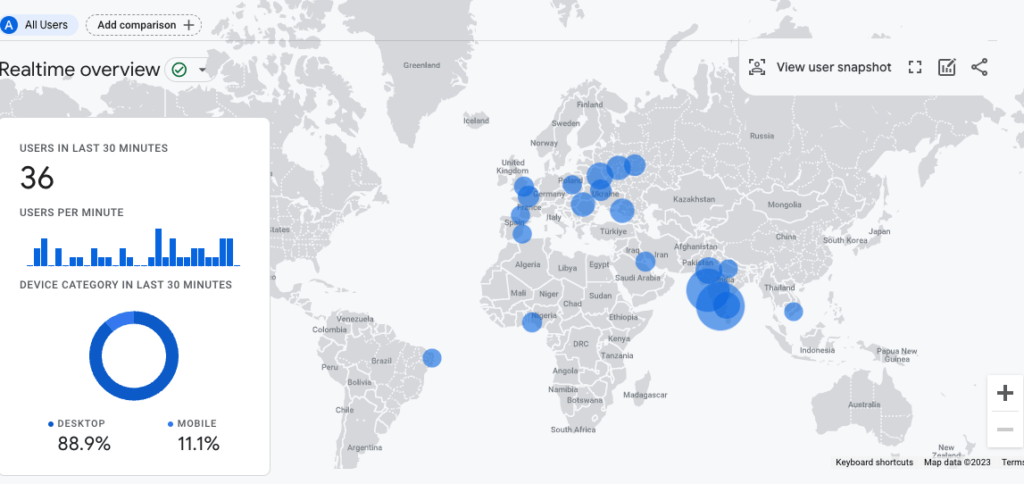
Non-US countries typically yield significantly less.
Third-world countries, such as India, typically earn 10-20x less than the US traffic.
Some ad companies don’t even accept websites with non-US traffic.
For example, Raptive (formerly AdThrive) doesn’t prefer publishers with traffic outside first-world countries like the US.
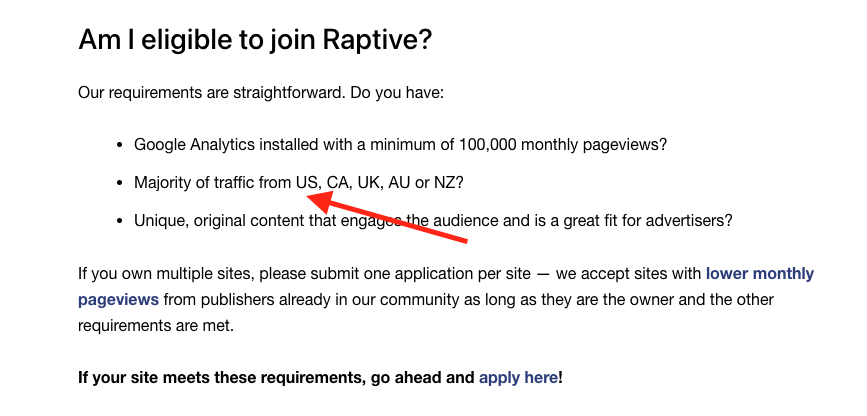
#9 Time Spent on Page
If your visitors stay on your page for a long time, there’s more room for showing ads which means more revenue.
This is why long-form blog posts typically earn more than short-form ones.
Many ad companies don’t even accept websites with short-form content. This is because the visits last only seconds and the ad revenue is minimal.
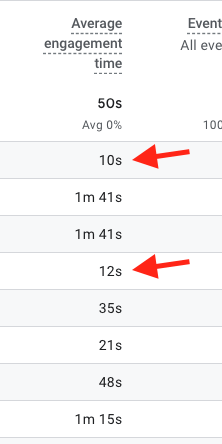
Bottom Line
There are so many things that can have a huge impact on ad revenue.
An “ad-optimal” site has:
- A lucrative niche
- Mostly US visitors
- Long-form posts (1,000+ words)
- High views per visit ratio
- High engagement
- Useful and helpful content
Keep these in mind when choosing a niche!
